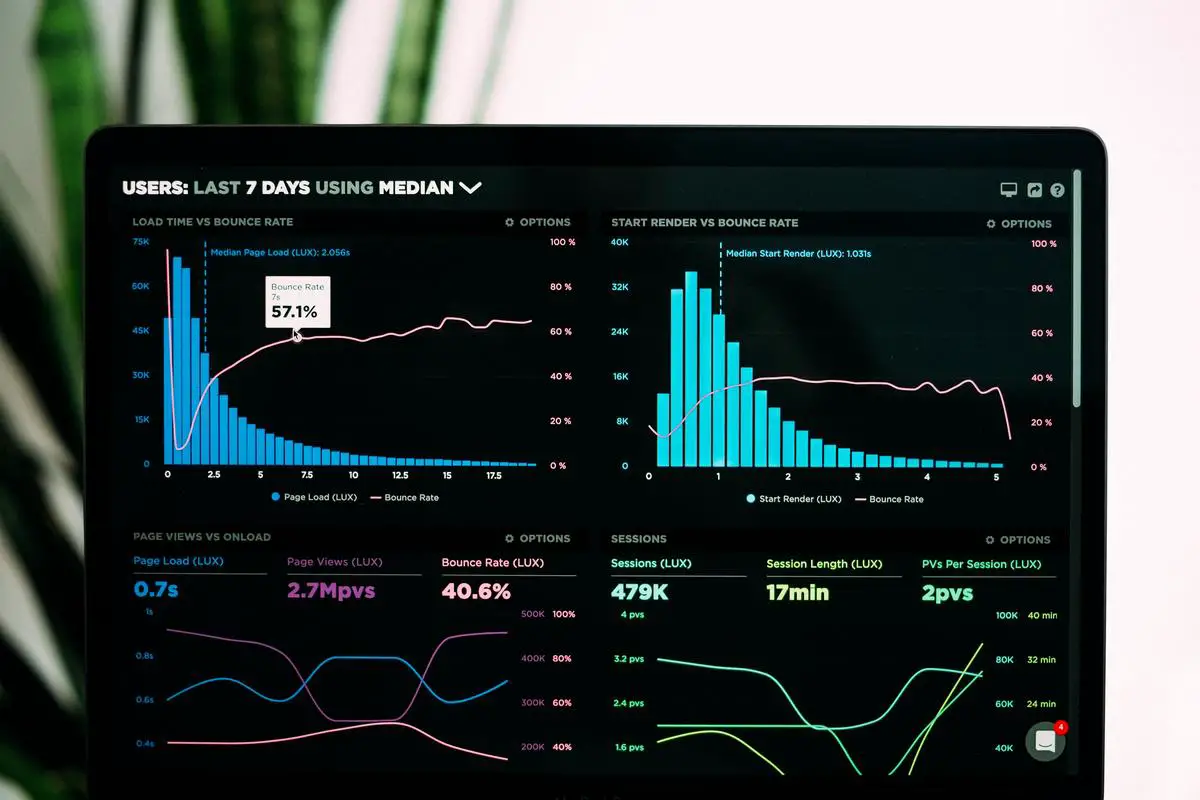In the exhilarating world of day trading, quick decisions and high stakes can often make adrenaline surge, paving the way for heightened emotions. It is in this intensely charged environment that emotional discipline becomes key, serving as an anchor to rational decision-making when every second counts. Beyond the bustling trading floors and flashing computer screens, there is a profound science to understanding how emotions fuse with our neural processes, their impact on trading behaviors, and the proverbial part they play in shaping one’s trading success or failure. Let’s explore the grey area between high-risk financial behaviors and the much-needed emotional discipline that can potentially turn the tide in a day trader’s favor.
Understanding Emotional Discipline
Emotional Discipline: The Cornerstone of Successful Day Trading
In the relentless world of day trading, success is determined by much more than simply possession of strategic acumen and financial know-how. The secret ingredient? Emotional discipline.
In essence, emotional discipline involves regulating your feelings to make logical and rational decisions, especially in high-stress scenarios. In the fast-paced world of day trading, the rollercoaster of market highs and lows can lead even the most seasoned traders to experience periods of elation, fear, or anxiety, undermining rational decision-making. This is why emotional discipline is not just beneficial, but essential for any day trader’s tool kit.
In the domain of day trading, emotional discipline is just as, if not more, important than financial knowledge. Why is this so? Tactical trading decisions need to prevail over gut reactions. Split-second decisions can lead to significant financial gains or losses. Emotional discipline aids in preventing the clouding of judgment that may result in impulsive actions.
Emotionally disciplined traders not only separate their feelings from their actions, but they also maintain a level-headed approach during both soaring highs and tumbling lows of the market. This level-minded strategy allows them to stay on track with their pre-planned strategies, frequently leading to more consistent outcomes.
Now, consider real-world examples to delve deeper into the mystery of emotional discipline in day trading. Look at the catastrophic stock market crash of 2008. Many traders, swayed by panic, sold off their investments, leading to significant financial loss. Contrastingly, traders with high emotional discipline held onto their investments, weathered the storm, and eventually observed asset rebounds.
A psychologically-fashioned approach, incorporating mindfulness practices, stress management, and cognitive restructuring, can be key to nurturing emotional discipline. Staying in tune with the market while regulating emotional responses is certainly a balancing act, but one that comes with time and dedication.
In summary, emotional discipline isn’t merely about suppressing feelings – it’s about harnessing these emotions to work in your favor. It empowers traders to keep fear and greed in check, idly steering clear from hastily made decisions that could jeopardize their goals. By consistently practicing emotional discipline, not only will traders adapt to the market’s ebb and flow, but successfully navigate it towards continuous financial growth. Commit to emotional discipline, and step ahead in your day trading journey.

The Neuroscience of Trading
The Power of the Mind: Unmasking Brain Chemistry and Emotions in Trading Decisions
In the dynamic world of trading, data, market trends, and financial indicators take the limelight. However, in the complex mechanics of investing, an often overlooked aspect lies within – our emotions and underlying brain chemistry. So, how exactly do these internal facets shape trading decisions?
The human brain is a fascinating machine. It houses neurotransmitters such as dopamine and serotonin that regulate our mood, and the amygdala, the center of our emotional responses. Imagine, you’re observing monumental market highs, your dopamine levels spike, inducing a sense of euphoria. This excitement may nudge you to invest generously. Conversely, staring at drastic market lows can stir your amygdala, prompting fear and potentially leading to hurried sell-offs.
These phenomena branch into two widely recognized psychological biases – overconfidence and panic selling. Overconfidence emanates from continuous successes leading to an inflated sense of confidence, potentially causing reckless investment decisions. On the flip side, panic selling occurs when fear-driven traders hastily sell out of their positions, fearing further losses.
On a positive note, emotions aren’t necessarily bad. Traders exceptionally attuned to their feelings tend to acknowledge market sentiments better, deciphering fear and greed-driven trends effortlessly. Emotionally-attuned traders also strengthen their intuition – an integral trait for making swift, informed decisions.
Further aiding decision-making is our prefrontal cortex – the headquarters of logical reasoning and decision-making abilities. A well-trained brain can enhance rational thinking, mitigating the inherent emotional bias. Cognitive control exercises, like meditation and problem-solving, can strengthen this area of the brain, fostering prudent decision-making abilities.
Moreover, traders can harness neuromodulation techniques, involving deep-breathing exercises and mindfulness, to tap into their brain’s neuroplasticity. These techniques support the regulation of the amygdala, minimizing emotionally hasty decisions, and promoting sound judgment.
While the old adage, “Don’t mix business with pleasure,” holds to an extent, the separation of emotions and trading is an unrealistic goal. Instead, understanding and managing emotions provides a strategic advantage. Traders become more resilient, balanced, and attuned to market sentiments.
In the volatile world of trading, learning to navigate the intricate relationship between your emotions, brain chemistry, and trading decisions could be the key to long-lasting success. Apply brain training, neuromodulation, and emotional attunement, and harness the power within to elevate your trading potential. Embrace these as essential components of your trader toolkit, leveraged alongside your fundamental and technical analysis for a comprehensive trading approach.

Photo by alinnnaaaa on Unsplash
Emotional Traps in Day Trading
Mastering Emotional Landscapes in Day Trading: The Crucial Path to Success
Diving further into the myriad worlds of the financial market, the journey of a day trader requires not only practical skills but also the mental agility to ride the ebb and flow of the stock market waves. Unwatched emotions are like hidden mines that can cause decisions filled with risk and loss – if we let them. Employing control over one’s inner landscapes is much like wielding a rudder in turbulent seas – an essential tool for guiding the trading ship towards success.
We buy and sell not only on logic and analysis but also on feelings. Our neural wiring plays a significant role in investment decisions as it does in our everyday life. The neurotransmitters, crucial chemicals that transmit signals in our brains, such as dopamine and serotonin, have substantial sway over our mood and responses. Understanding their impact can help traders make better decisions.
The amygdala, the brain’s emotional center, can trigger potent responses to perceived threats – in trading, this may translate into panic selling or the fear of missing out. Conversely, a surge of overconfidence, stemming from a winning streak, can lead to a dangerous risk appetite. Recognizing these potential traps before falling into them is a cornerstone for durable success in trading.
On the other hand, emotions are not always the villains of the trading narrative. Emotions can influence strategic decision-making by enhancing intuition and refining market sentiment analysis, enabling quick adjustment to swift market changes. Emotional intelligence can edge our decision-making prowess – if we know how to use it productively.
Trading, like any quest, necessitates a blend of reason and emotion. The prefrontal cortex, the brain’s center for logical reasoning and decision-tree analyses, imposes necessary cognitive control over our emotional responses. Traders can benefit from cognitive control exercises to amplify rational thinking and keep emotional turbulence in check. Techniques like deep-breathing exercises, mindfulness, and other self-regulation practices can mitigate challenging emotional states that may lead to rash trading decisions.
Ultimately, the route to success intertwines the complexity of our brain chemistry, our emotional landscapes, and trading decisions. Shaking hands with our emotional side may initially seem daunting, but with understanding and effective management, they can become our strongest allies. It’s time to acknowledge emotions not as random reactions to be suppressed but as valuable data to be interpreted and used constructively.
This balance in emotional landscapes, shoring up rational decisions, and using effective emotional management tools paves the way to resilience, steady decision-making, and continuous growth in the world of day trading. The journey might be turbulent, but with the rudder of emotional intelligence firmly in hand, your trading ship is already sailing toward the horizon of success.

Strategies to Enhance Emotional Discipline
Strategies to Boost Emotional Discipline in Day Trading
Maintaining emotional discipline is indispensable when it comes to the world of day trading. To navigate the high-stakes arena of financial markets, traders must cultivate practices that assist them in managing their emotional state. In the following sections, we delve into strategies that can bolster emotional discipline to ensure a more effective balance between rational thinking and emotional responses in the high-pressure world of day trading.
- Continuous Self-Reflection: Traders must remain continually mindful of their feelings and emotional states. Self-reflection provides traders the resilience to understand how their feelings can alter their decision-making abilities. By consciously recognizing these emotions, they can bring their attention back to the strategic goal and make informed and rational decisions.
- Stick To the Plan: Creating a trading plan serves as a blueprint for when, why, and how to trade. Defined entrance and exit rules provide a guideline that can prevent unnecessary emotional turmoil. Adhering to this plan can restrain emotions from clouding negotiate strategies or overriding rational decision-making processes.
- Implementation of Stop-Loss Strategy: Emotional control can be strengthened by developing and strictly adhering to a stop-loss strategy. This predefined trading parameter eliminates impulsive decision-making brought on by emotions, thus offering protection against enormous financial losses.
- Practice Emotional Detachment: The ability to detach personal identity from the fortunes of trading is a surefire tactic for successful traders. It encourages viewing trading activities as business transactions, devoid of emotional investment.
- Create a Support Network: Building a robust professional network can provide emotional support and offer diverse perspectives during challenging market situations. Knowledge sharing and camaraderie can buffer negative emotional turmoil and provide strategies for managing stress or coping with losses.
- Incorporate Regular Breaks: Emotional stress can amplify during continuous trading sessions. Integrating regular breaks can help soothe nerves, rejuvenate mental faculties, and recharge emotional energy.
- Develop a Growth Mindset: Understanding that mishaps are part of the learning curve and not a personal failure enables traders to embrace challenges, persevere during setbacks and see effort as a path to competence.
- Regular Exercise & Balanced Diet: Physical wellness and diet play a significant role in emotional well-being. Regular exercise can regulate mood-impacting neurotransmitters, while a balanced diet can level off energy levels and mood boosts.
By embracing these strategies, day traders can foster emotional discipline, enabling them to handle the roller coaster of market highs and lows. Remember – day trading success doesn’t call for an absence of emotions but their effective management. Yes, the journey has its challenges, but with emotional intelligence, perseverance, and discipline, the voyage to successful day trading can be incredibly rewarding.

Photo by lukechesser on Unsplash
Real-World Case Studies
Developing Emotional Discipline: The Road to Successful Trading
There’s a fierce debate about the role of emotions in the trading universe. Successful traders, however, recognize the importance of mastering their emotions rather than pushing them away. This acquired emotional discipline can significantly enhance decision-making effectiveness, leading to substantial financial growth.
Emotional discipline is not developed overnight. It doesn’t necessarily come naturally, but it’s surely workable. Several traders have navigated their path to trading profitability by adopting an intentional strategy of emotional discipline. How so?
- Implementing a Stop-Loss Strategy. Every successful trader knows the dark alley of unrestricted loss. A stop-loss strategy offers traders an emotional guardrail, preventing heavy losses that could ignite emotional meltdown and poor decision-making in the trading cycle. It is an explicit and clear commitment to absorb a specific level of loss before exiting a trade. This strategy removes the emotional burden linked with deciding when to sell, fostering emotional discipline while safeguarding finances.
- Sticking to a Trading plan. Always set your destination before starting the journey—that’s the essence of a Trading Plan. Whether it’s a detailed map or just a basic sketch, a trading plan sets the roadmap for every trade, offering both the direction and the action steps. By sticking to the trading plan regardless of temporary market fluctuations, traders cultivate emotional discipline and eliminate the impulsive alterations that emotions may otherwise trigger.
- Practicing Emotional Detachment. ‘Just a trade, not a trading career,’ should echo through the minds of every trader. With markets always providing another opportunity, no single trade should be given the ability to emotionally derail a trader or to define their trading career. Emotional attachment to trades can blur the clear vision needed for objective decision-making. Practicing emotional detachment helps in maintaining an emotionally balanced mindset while focusing on long-term trading targets.
- Creating a Support Network. Even Showtime’s Billionaire Bobby Axelrod would agree that the camaraderie of a network of like-minded traders is invaluable. During the tough times, a good support network prevents irrational decisions that would otherwise be influenced by sudden swings of fear and greed. Maintaining connections with other traders, joining trader communities, or even mentoring others can reinforce emotional discipline and offer more perspectives in navigating the trading challenges.
- Incorporating Regular Breaks. Just like an overheated machine, a trader under continuous stress might break. The incorporation of regular breaks within the trading hours helps in lowering the emotional temperature, enabling recharge and fresh perspectives. Time-out periods allow for emotional, cognitive, and physical restoration necessary for maintaining a disciplined trading mindset.
- Developing a Growth Mindset. Adopting a growth mindset is a highly effective emotional discipline strategy. With this framework, the trader is positioned as a continual learner. Mistakes and losses become not disasters, but opportunities for growth and adjustment. This mindset fosters a positive relationship with trading events, enabling resilience through the market lows, and emotional discipline during the market highs.
- Maintaining Physical Wellness and a Balanced Diet. It’s no surprise that a healthy mind operates optimally in a healthy body. Regular physical activity, a balanced diet, and proper sleep can enhance overall emotional regulation, which is vital for maintaining emotional discipline during trading. This underscores the importance of a holistic approach in nurturing emotional discipline.
The road to mastering emotional discipline in trading may be demanding, but the cost of allowing unchecked emotions to dictate trading decisions may be higher. With strategic intention and consistent practice, traders can cultivate the emotional discipline necessary for financial growth and success in the trading world.

In the realm of day trading, maintaining emotional discipline is more than a necessity; it’s a virtue. Understanding the intricate relationships between our brain chemistry, emotional responses, and trading decisions can be instrumental in avoiding common emotional pitfalls and enhancing our strategies. We draw inspiration from the narratives of successful traders who have mastered their emotions and coupled it with rational decision-making to navigate the unpredictable waters of day trading. The path to successful day trading may not always be smooth, but with the right emotional discipline and strategic approach, it’s one that’s certainly worthy of pursuit.


